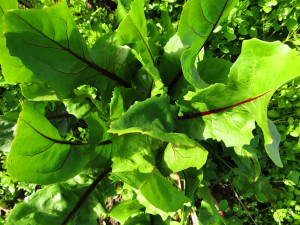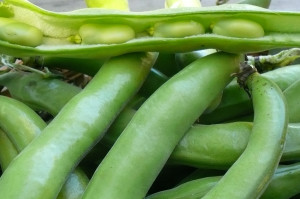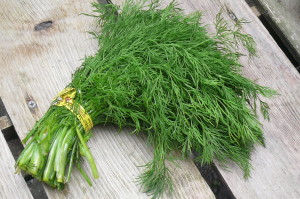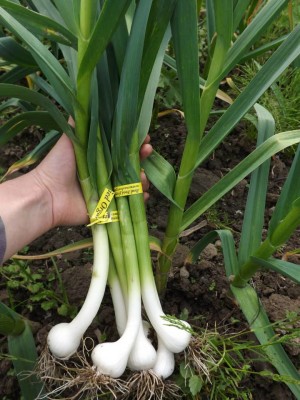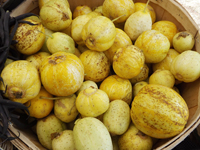
Lemon cucumbers are named for their lemony-yellow coloring. They taste like normal cucumbers, and their insides are filled with sweet seeds.
6 larger lemon cucumbers
1 smaller lemon cucumbers
4 cloves garlic
1/2 teaspoon sea salt
3/4 cup toasted almond slivers
2 slices stale bread, cut into rough pieces
2 tablespoons grape seed oil (or other mild oil)
1 1/2 cups plain yogurt
1/4 cup cold water
2 teaspoons lemon juice
Pinch white pepper
1 large leaf basil for garnish
1 teaspoon lemon zest for garnish
Thoroughly wash and dry cucumbers. Slice 1/4 inch off the top (stem side) of the 6 larger cucumbers. Using a spoon and knife as needed, scour and scoop out the insides of cucumbers and put the insides in a blender. Set the “bowls” aside. Dice the smaller cucumber and set aside.
Mince the garlic and sprinkle with salt. Using the back of a wide knife blade, work the salt and garlic together until it forms a smooth paste. Scrape up the garlic and add to blender.
Add toasted almonds to blender, reserving a couple for garnish. Pulse blender to start processing the ingredients. Add the bread and continue to process.
When the mixture is fairly smooth, slowly add the grape seed oil and combine well. Next add the plain yogurt and process again until well combined. Finally add the cold water and lemon juice. Taste and season as needed with white pepper.
Stir (not blend!) the diced cucumber into the soup. Carefully spoon the soup into the cucumber “bowls.” Chill for at least an hour. Before serving, garnish soup with ribbons of basil, a pinch of lemon zest and an almond sliver. Serve immediately.
Have you tried this recipe? Tell us how it turned out!

